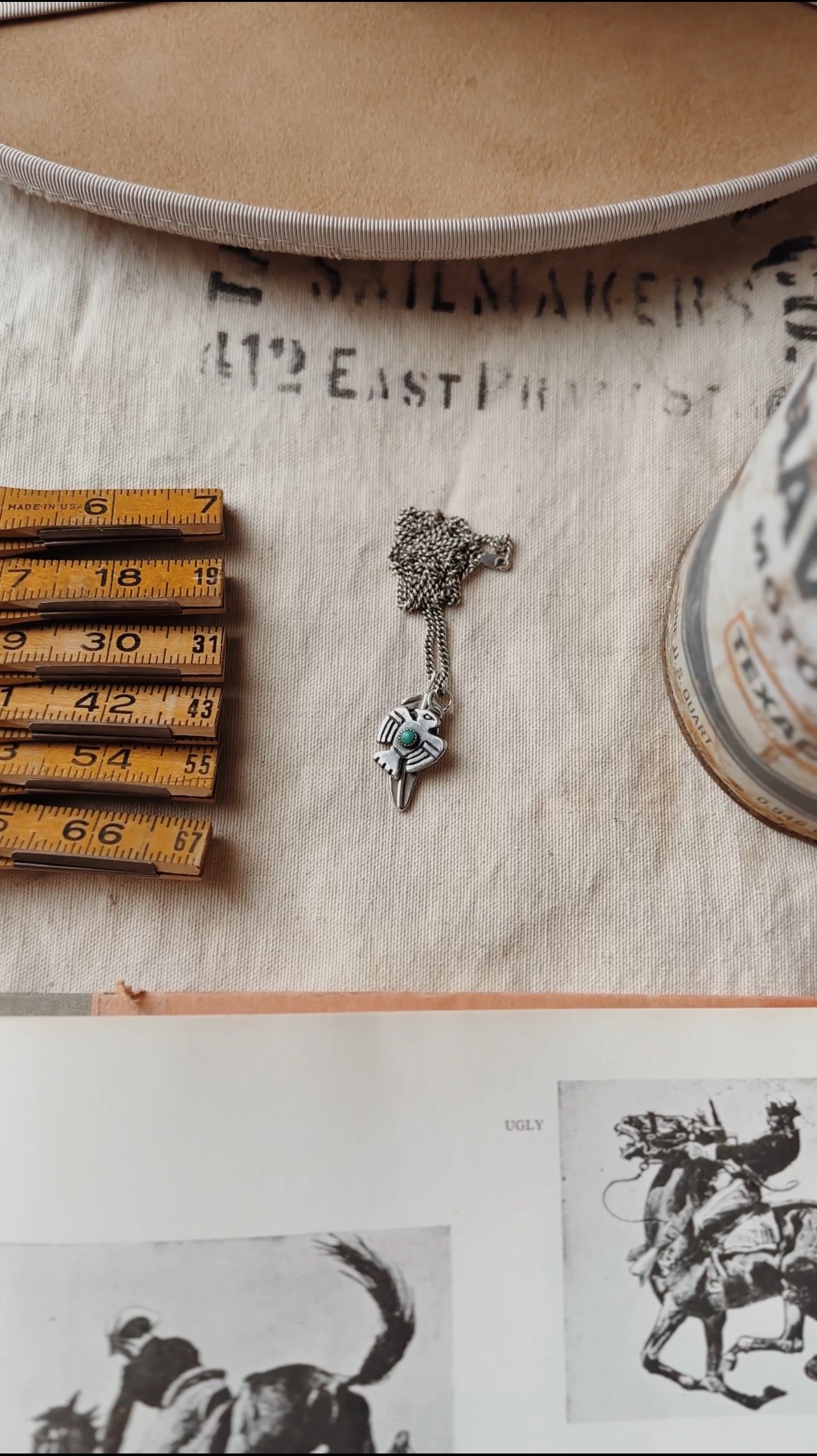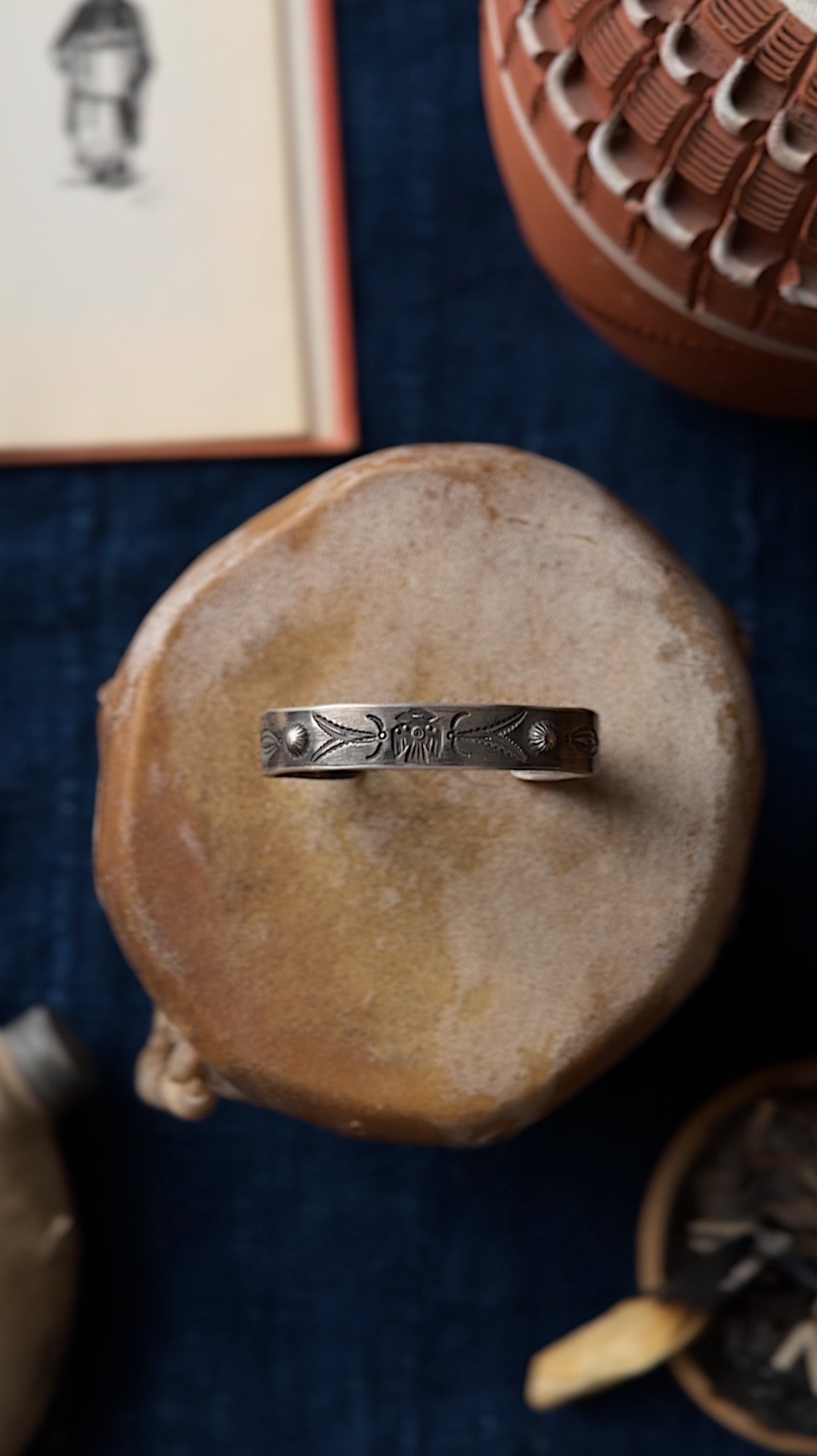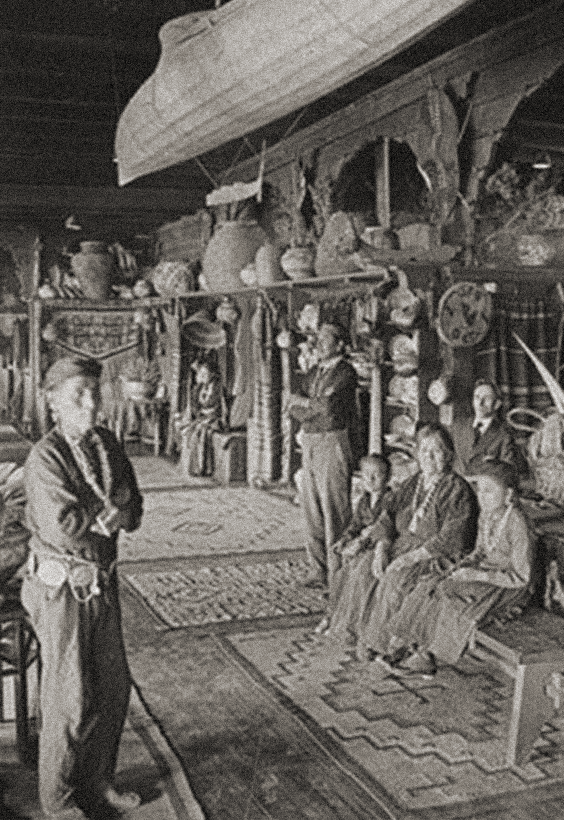THE ORIGINS OF THE THUNDERBIRD IN SOUTHWEST SILVERSMITHING
While there is no doubt that a bird is commonly depicted in prehistoric Southwest artifacts and attributed to Pueblo and Navajo mythology, its use in Southwest jewelry is not of organic origin.
During the turn of the 20th century, this bird figure was eventually adopted by the railroad and trademarked by the Fred Harvey co under their Chief jewelry curator, Hermann Schwiezer.
He noticed that the common tourist traveling through the West wanted more affordable, lightweight souvenirs as opposed to the heavier, more expensive pieces previously made, so he began to commission native and non native smiths to make cheaper trinkets, pioneering the use of symbols like the Arrow, Rainclouds, Whirling Logs and the newly dubbed “Thunderbird”, attributing subjective meanings to the symbols.
Though this commercialized Southwest jewelry is seen by some as controversial, it did contribute greatly to the crafts economy and popularization.
According to “Indian jewelry, Fact & Fantasy”, many of the Navajo smiths “would develop a childlike fondness for these new symbols - which for them had no meaning. They began to use them on their own personal jewelry and the pieces they made for other Indians.”
Over the last hundred and fifty years or so the Thunderbird has taken on a life of it’s own and theres no question that it has become a staple of American Southwest Jewelry.









